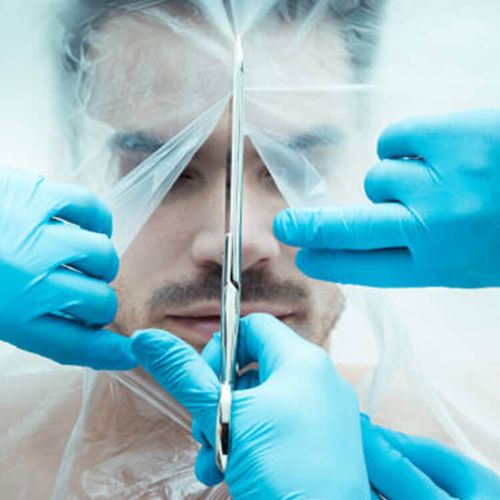Doctors at the Ochsner Clinic Foundation in New Orleans have started a campaign against two conditions that are responsible for 10% of all hospital deaths each year.
One of these conditions is deep vein thrombosis (DVT), which occurs when a blood clot forms in the leg and blocks the flow of blood. This can lead to potentially life-threatening pulmonary embolisms, which are caused when a clot breaks free, travels upward through the body and lodges in a lung. If the clot is large enough, it can cause sudden death.
Approximately 500,000 Americans develop pulmonary embolisms every year, and 200,000 people die from them. The American College of Chest Physicians says it may be the most preventable cause of hospital death.
Who's At Risk?
People hospitalized for long periods of time are particularly at risk because blood can collect in their legs and increase the probability of a clot forming.
Air travelers can also be prone to the condition because of the long hours spent cramped in a seat, experts say. Those with cancer, chronic heart or respiratory failure, and an inherited or acquired predisposition to clotting and varicose veins also have an increased risk. So do people who are obese, as well as women who are pregnant or are using birth control pills or hormone-replacement therapy.
Symptoms of DVT can include leg pain, swelling, tenderness, discoloration or redness. Often, though, there are no symptoms.
Dr. Samuel Goldhaber, director, Venous Thromboembolism Research Group at Brigham and Women's Hospital in Boston, says the conditions are difficult to diagnose.
What Can Be Done?
Dr. Steven Deitelzweig, Ochsner's chairman of the department of hospital medicine, and his colleagues have developed a clinical assessment tool to help identify people who are at risk for developing DVT. The various risk factors-obesity, heart failure, infections, lung problems, prolonged immobility-are put on a grid. Everyone admitted to the hospital is assessed and put in a category of low, medium or high risk.
People who have two risk factors get treated with non-pharmacological devices, such as compression stockings.
If a person has at least three risk factors, or two risk factors and a history of stroke or cancer, they get at least one blood-thinning drug.
How to Choose the Right Hospital
If you assume that hospitals are roughlyI equivalent in the quality of care they offer, you could be making a deadly mistake. Most people are not aware of the differences among the various types of hospitals. What you should know...
There are two major categories of hospitals—specialty hospitals and general hospitals.
Specialty Hospitals
Speciality hospitals focus on either one type of medical condition, such as cancer or eye problems, or deal exclusively with a specific category of patients, such as women or children.
Advantage: Greater access to applicable new technology and treatment techniques.
Disadvantage: Since not all communities have specialty hospitals, you may have to travel a great distance to use one.
Best used for: Complicated problems, such as major heart surgery or rare conditions, such as certain cancers.
General Hospitals
General hospitals deal with a wide variety of medical conditions.
Advantage: General hospitals are better equipped to handle unexpected medical situations that may occur in the course of treatment.
Disadvantage: They may not be expert in rare or unique problems.
A general hospital can be a community hospital or a medical center...
Community hospitals typically have fewer than 250 beds but are fully equipped to handle most medical conditions.
Advantage: Because they have fewer patients and shorter lengths of stay, on average, community hospitals have lower infection rates than larger hospitals.
Disadvantage: They may not have as many highly trained specialists.
Best used for: Routine treatment and surgery, such as appendectomy.
Medical Centers
Medical centers are large institutions that are typically, though not always, affiliated with universities.
Advantage: Medical centers offer state-of-the-art intensive care and coronary care.
Disadvantage: Because medical centers typically have sicker patients who get less personalized attention, higher infection rates are often reported at these facilities.
Best used for: Complicated conditions requiring medical experts in a number of specialties—for example, cardiology and endocrinology—and/or rare conditions that require comprehensive diagnostic services.
Community hospitals and medical centers can be classified as teaching or non-teaching facilities...
Teaching Hospitals
Teaching hospitals provide teaching programs for medical students, interns (students still in training) and residents (doctors learning specialties).
Advantage: Access to cutting-edge technology and renowned expertise (that's why students come there).
Disadvantage: Students are learning on you! Therefore, you are often treated as a condition, not a person. There are no studies indicating that teaching hospitals are better than non-teaching hospitals, so choose the type of facility that best meets your needs.
Non-teaching Hospitals
Non-teaching hospitals are strictly care facilities.
Advantage: Less intrusive care.
Disadvantage: Usually fewer specialties are offered.
Best used for: People who are being treated for non life-threatening conditions.
